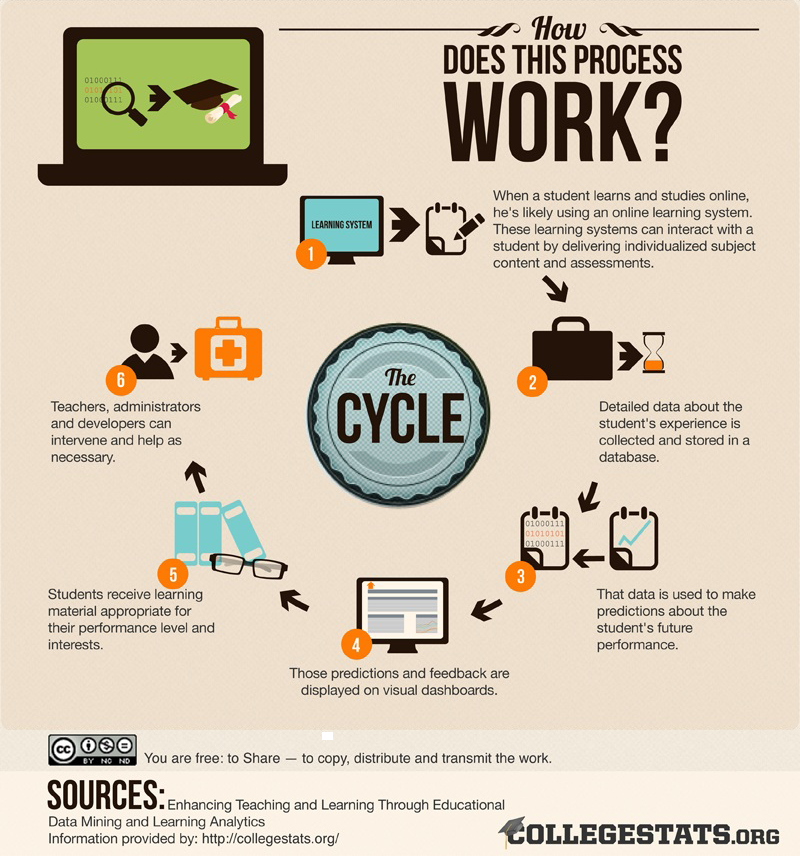| When learners interact with an online environment, they produce data that can be mined for learning analytics. Some examples of online sources of data include Learning Management Systems, Intelligent Tutoring Systems, and Educational Games. |
For the educational data to be mined, it needs to be available; for this reason, most educational data is stored in databases. The increase in stored data leads to better analytics, but also raises concerns regarding privacy and the cost of storage. |
When data is readily available, tools and techniques can be used to determine the relationships between variables. This information can then be used for purposes such as prediction and customization. |
Once the data has been analyzed, computational algorithms and graphics engines interpret the data and allow for it to be displayed through visuals such as analytic dashboards. |
Information output from learning analytics can be used by students, teachers or administrators to perform functions such as tracking progress, delivering content, or analyze trends. |




